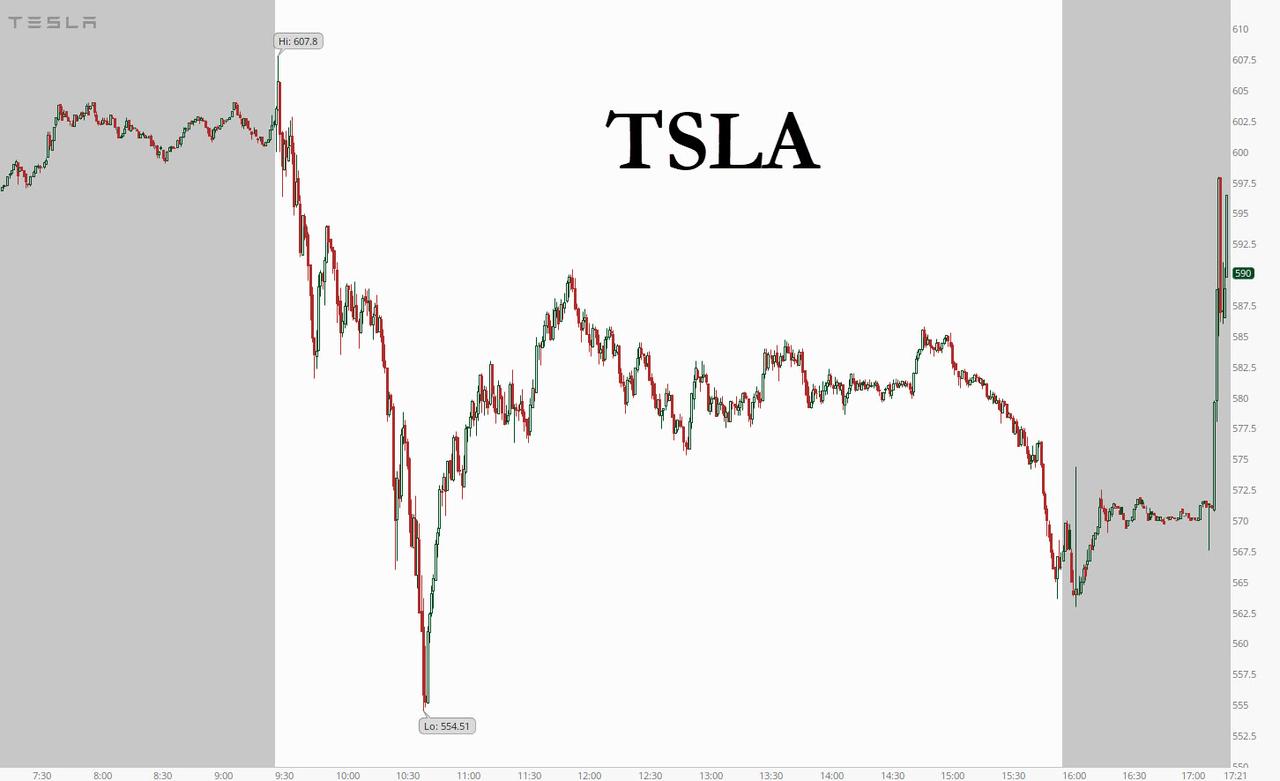TSLA Surges After S&P Announces It Will Add Automaker At Full Float
Tyler Durden
Mon, 11/30/2020 – 17:31
Leave it to Tesla army of momentum-chasing fanatics to send the stock surging not once but twice on S&P inclusion news.
Two weeks after TSLA hit an all time high after S&P unexpectedly announced that it would include the EV maker in the S&P on December 21, moments ago – in an anticipated announcement – S&P Dow Jones Indices said it has determined that it will add Tesla to the S&P 500 at its full float-adjusted market capitalization weight effective prior to the open of trading on December 21.
Ahead of the determination, S&P considered the expected liquidity of Tesla and the market’s ability to accommodate significant trading volumes. In the end it picked the simplest solution: basically absorbing the entire company in one go.
The reason for S&P’s quandary is that with a market cap of $555BN, or more than Berkshire Hathaway, the moment Tesla is included in the S&P, it would become the 6th largest company in the index, only behind the FAAMGs.
S&P also said that after the market close on December 11, pro-forma files will be distributed, and a press release will be published announcing which company Tesla will replace in the S&P 500.
Considering that the S&P inclusion is expected to result in some $11 billion in mandatory purchases it is safe to say that TSLA has gotten more than a fair share of upside, with the stock surging by $200 since the S&P announcement, an addition of more than $200 billion to its insane market cap. What’s better is that after surging on Nov 16, the stock spiked some more for good measure after today’s announcement – as if it was a surprise – with the stock up 5% after the close, or adding an additional $20BN in market cap on the exact same news. Because efficient “markets.”
And since the market-cap weighted S&P is likely to dump some of its smallest members in exchange for accepting TSLA, the likely impact on the broader index is new all time highs.
So will Tesla just keep rising to infinity?
Maybe, but according to Gary Black, who was chief executive of Aegon Asset Management from mid 2016 through September, after the initial buying into the Dec. 21 inclusion, the stock may pull back if history is any guide. Black said the shares may fall about 10% to 20%, a pattern that would be consistent with what happened to Facebook after its entry into the S&P 500 seven years ago.
Then again, seven years ago central banks weren’t pumping $300 billion into the market every month.
